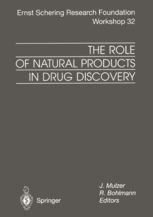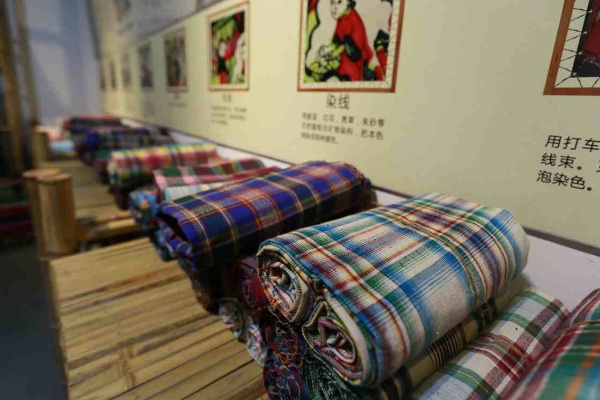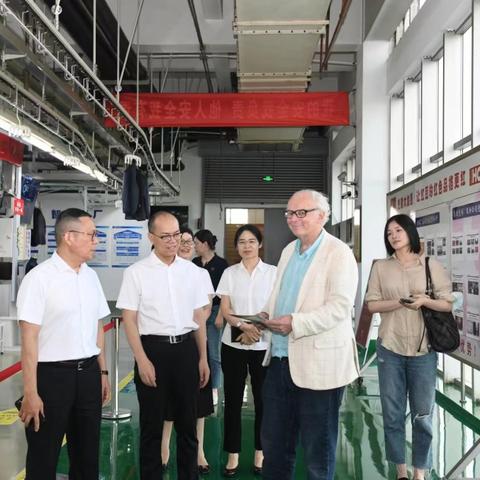The Multifaceted Role of Textiles in Modern Society:A Comprehensive Analysis
In the modern era, textiles have emerged as an integral part of our lives. From clothing and home decor to technical fabrics for electronics, textiles play a multifaceted role in society. They are not only practical but also aesthetically pleasing, contributing to the overall aesthetics of our surroundings. Textiles are essential in creating comfortable living spaces, enhancing the look of buildings, and providing functional items for daily use. The diversity of textiles available today has increased with advancements in technology, making it possible to create textiles with unique properties that cater to specific needs. The production process of textiles is also becoming more sustainable, reflecting a growing concern for environmental impact. As we continue to explore new applications for textiles, it is evident that their role in modern society will only continue to grow.
Textiles, the fabrics that make up our clothing and furnishings, have been an integral part of human civilization for centuries. From ancient Egyptian tombs adorned with intricate tapestries to modern-day fashion runways showcasing cutting-edge designs, textiles have played a significant role in shaping our world. In this article, we will explore the diverse applications of textiles across various industries, highlighting their impact on society and the economy.
Fashion Industry
Fashion is one of the most visible and lucrative sectors where textiles are used extensively. Clothes, shoes, accessories, and even household items like curtains and bedding are made from textiles. The fashion industry generates billions of dollars annually, employing millions of people worldwide.

| Textile Application | Example |
|---|---|
| Clothing | Jeans, T-shirts, dresses, coats, hats, scarves, etc. |
| Footwear | Shoes, boots, sandals, slippers, etc. |
| Accessories | Bags, belts, jewelry, scarves, etc. |
| Home Furnishings | Curtains, bed sheets, towels, pillowcases, etc. |
Hospitality Industry
In the hospitality industry, textiles play a crucial role in creating comfortable and stylish spaces for guests. Hotels, restaurants, and other hospitality establishments use textiles such as linens, curtains, and carpets to enhance the guest experience.
| Textile Application | Example |
|---|---|
| Linens | Tablecloths, napkins, table runners, etc. |
| Curtains | Room dividers, privacy screens, etc. |
| Carpets | Floor coverings, wall hangings, etc. |
Sports and Leisure
Textiles are also used in sports equipment, such as uniforms and protective gear for athletes. They are also popular in leisure activities like camping and hiking, where soft and durable fabrics are essential for comfort.
| Textile Application | Example |
|---|---|
| Uniforms | Football jerseys, basketball uniforms, etc. |
| Protective Gear | Baseball gloves, football helmets, etc. |
| Camping & Hiking Gear | Sleeping bags, tents, hiking boots, etc. |
Textile Manufacturing
Textile manufacturing is a vast industry that employs thousands of people worldwide. It involves the production of raw materials like cotton, wool, and synthetic fibers, as well as the final product of finished textiles.
| Textile Application | Example |
|---|---|
| Cotton | Yarn, fabric, shirts, etc. |
| Wool | Sweaters, socks, hats, etc. |
| Synthetic Fibers | Fabrics made from polyester or nylon |
| Finished Textiles | Clothes, carpets, curtains, etc. |
Textile Recycling and Upcycling
As the demand for textile products increases, so does the need for sustainable and eco-friendly solutions. Textile recycling and upcycling are two important practices that help reduce waste and conserve resources.
| Textile Application | Example |
|---|---|
| Recycling | Used textile scraps, recycled yarn, etc. |
| Upcycling | Old clothes into new garments, using leftover fabrics, etc. |
Textile Education and Research
Textile education and research play a vital role in advancing the field of textile science and technology. By studying the properties of different textile materials, researchers can develop new materials that are more sustainable, durable, or aesthetically pleasing.
| Textile Application | Example |
|---|---|
| Textile Science and Technology | Studying the structure and properties of textile materials |
| Textile Education | Teaching students about textile history, design, and production |
In conclusion, textiles are not just a material but a cultural symbol that has shaped human civilization for centuries. Their diverse applications in various industries, along with their importance in sustainability and research, underscore their significance in modern society. As the global population continues to grow and technological advancements continue to shape the future of textile production, it is clear that textiles will continue to play a vital role in shaping our world.
纺织品作为人类生活中不可或缺的组成部分,其在各个领域的应用越来越广泛,本文将详细介绍纺织品的主要应用领域及其案例,帮助读者更好地了解纺织品的应用价值。
纺织品的主要应用领域
服装领域

服装是纺织品的主要应用领域之一,包括各种款式、颜色和材质的服装,纺织品在服装领域的应用广泛,从面料到辅料,从设计到生产,都体现了纺织品的独特优势,纯棉面料柔软舒适,适合制作休闲装;丝绸面料光滑细腻,适合制作礼服等高端服装。
家居用品领域
纺织品在家居用品领域的应用也日益广泛,窗帘、地毯、床单等家居用品都是纺织品的重要应用领域,这些家居用品不仅美观实用,还能提高居住环境的舒适度,纺织品在环保家居用品领域的应用也越来越受到重视,如可降解、抗菌等功能的纺织品。
工业领域
纺织品在工业领域的应用也日益广泛,纺织材料用于制造工业过滤网、防护服、医疗器械等,纺织品在纺织机械、纺织染整等领域也有广泛应用,这些领域的发展不仅推动了纺织品的生产技术进步,还促进了相关产业的发展。
案例说明
服装领域案例:某品牌纯棉服装
该品牌纯棉服装采用高品质的纯棉面料,柔软舒适,适合各种场合穿着,该品牌还注重细节设计,注重产品的品质和细节处理,使得该品牌纯棉服装具有很高的市场竞争力。
家居用品领域案例:某品牌窗帘
该品牌窗帘采用高品质的丝绸面料,具有优雅、高贵的特点,该品牌还注重环保理念,推出了一系列环保家居用品,如可降解窗帘等,这些举措使得该品牌窗帘在市场上具有很高的口碑和竞争力。
补充说明(表格)
以下是关于纺织品主要应用领域的补充说明表格:
| 应用领域 | 主要产品或服务 | 案例说明 |
|---|---|---|
| 服装领域 | 各类服装 | 如纯棉服装、丝绸服装、羽绒服等 |
| 家居用品领域 | 窗帘、地毯、床单等家居用品 | 如某品牌窗帘的高品质面料和设计理念等 |
| 工业领域 | 纺织材料、纺织机械、纺织染整等 | 如某公司利用纺织材料制造工业过滤网等 |
| 其他领域 | 其他功能性纺织品 | 如抗菌、防静电等特殊功能纺织品 |
纺织品在各个领域的应用越来越广泛,其独特优势和广泛应用价值得到了广泛认可,随着科技的不断发展,纺织品的应用领域还将不断扩大和深化,我们应该继续关注纺织品的发展趋势和应用价值,为人类生活带来更多的便利和舒适。
Articles related to the knowledge points of this article:
Trends and Prices in Laiyuan Textile Markets Socks
Unleash your Style with Casimodos Latest Textile Collection
Detecting and Reducing Formaldehyde Exposure in Textile Products



